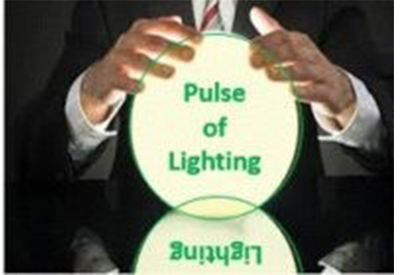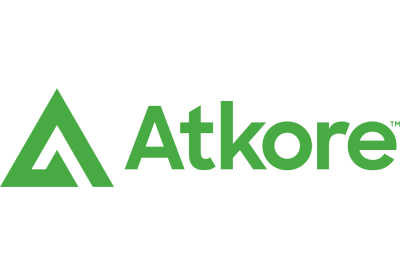How PoE Lighting Technology Will Affect Distributors

March 6, 2017
David Gordon

The lighting market is changing and electrical distributors are at risk of losing aspects of the lighting segment. While it’s doubtful that they’ll lose the majority in the “near” future (5, 10, 15, 20 years), it is being whittled away by a number of factors (see below).
The point is that the lighting space is not the sole domain of electrical or lighting distributors. The emergence of LED and the fact that it is an electronic device changes the game. With lighting fixtures representing 20-33% of distributor sales (changes by distributor and their focus) and lamp sales declining, distributors should consider this as a critical business segment that requires senior management attention, a business/marketing plan, dedicated resources, and a growth mentality that is not restricted to historical customer types and models if this is to be a core component of your business long-term.
Market factors threatening lighting distributors
These seven developments are each affecting the distribution industry.
• alternative channels (online, other “brick and mortar” distribution channels, The Home Depot / Interline Brands increasing sales to the professional market, Grainger)
• direct by “legitimate” manufacturers
• direct by “low ball” pricing from unknown manufacturers
• online manufacturers such as Econolight
• lighting contractors who purchase by by-passing distribution
• datacom/low voltage contractors who purchase from datacom distributors (and purchase PoE products)
• landscaping companies selling more outdoor lighting, and others
LED technology has been around for a while, but is relatively new in the lighting space. Wendell Strong, the GENISYS PoE Lighting Manager for Innovative Lighting, and past president of The National Association of Innovative Lighting Distributors (NAILD), has taken a look at where lighting is going. Here’s a sample of his thinking.
My father used to say it didn’t matter how efficient your car was if you left it running in the driveway, and so it is with lighting. Originally our quest was solely lumens per watt which was great, but we tended to not apply much control as we were already gaining more efficiency. When controls were applied, they were costly, cumbersome and often confusing to the end user. As a result they didn’t always perform as desired. We seemingly “lost control” while trying to gain it.
This was the result of approaching control as “add on feature” as opposed to control being innately part of the lighting system technology to begin with. This is why truly intelligent lighting control has never really existed before.
There is a very simple truth at the heart of this. We are treating LED technology the same as every other lighting technology to date when it is very different. And missing that difference is missing everything it can become.
The LEDs themselves don’t want or need A/C power. Power-over-Ethernet (POE) provides the DC low voltage power that the LEDs crave. All delivered via a simple everyday Ethernet cable that provides not only their power but control as well through that very same cable. One wire does both power and control. This is a game changer in every sense of the phrase.
This means we no longer require the traditional electrical infrastructure or even the lighting circuits altogether. They prevent intelligent control and are quite frankly obsolete in a networked lighting world.
PoE lighting technology is fully networked lighting at a DNA level. Not only is every energy lighting control function built in with a 1% incremental granularity, everything is individually addressable. This is where the statements of “up to 90% energy savings compared to traditional lighting” come from when multiple control strategies can be brought to bear on a single luminaire easily and simply.
The power of networking via PoE and the very nature of Solid State Lighting (LED) combined, produce a sum far greater than its individual parts. Needless to say this is a quantum leap from where we are today and that is looking at this PoE Lighting technology from only a lighting control perspective.
This by itself challenges the way we handle lighting today throughout the entire channel starting with the lighting designer (and others) all the way through to the installer and the company personnel responsible for controlling the system.
Truthfully, it may create new branches in the channel that do not naturally exist today. What is the role of IT if any moving forward? How does this affect the matured distribution model of today? There are many questions like these when “any significantly advanced technology is indistinguishable from magic,” as Arthur C. Clarke famously said. And yet, the technology itself doesn’t care.
The final instalment of this series will outline what this all means as we translate what we are capable of doing today beyond sustainability, energy efficiency and savings. We will explore what fully networked lighting is capable of delivering to everyone affected by the PoE lighting system. Meanwhile, start imagining what you wish a lighting system could do!
As Wendell infers, PoE challenges the current lighting order. If customer decisions start in the IT department, who is calling on them. Does the role of the lighting agent change? The lighting specifier may or may not be involved? Who installs the system? And what happens when other electrical infrastructure isn’t needed … and the electrical spend decreases … reducing electrical product revenues for the distributor. And lighting fixture sales (and the needed sensors and software) revenue accrues to datacom distributors (Graybar, Anixter, theoretically CSC, DigiKey and others)? If lighting is 20-33% of your business and you lose 3%, 5%, 8%, 15%, 20% of this business over the next five years, what does that do to distributor growth prospects, especially since there are “tag along” product sales that will also disappear.
For distributors, can you afford to wait to see what happens or what till your customers ask for PoE? Manufacturers, is there a role for the electrical channel? And can distributors add value in the software element of where lighting / lighting controls are going?
Watch for more on this topic in an upcoming issue.
David Gordon is President of Channel Marketing Group. Channel Marketing Group develops market share and growth strategies for manufacturers and distributors and develops market research. CMG’s specialty is the electrical industry. He also authors an electrical industry blog, www.electricaltrends.com. He can be reached at 919-488-8635 or dgordon@channelmkt.com.











